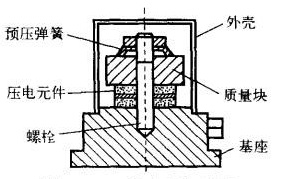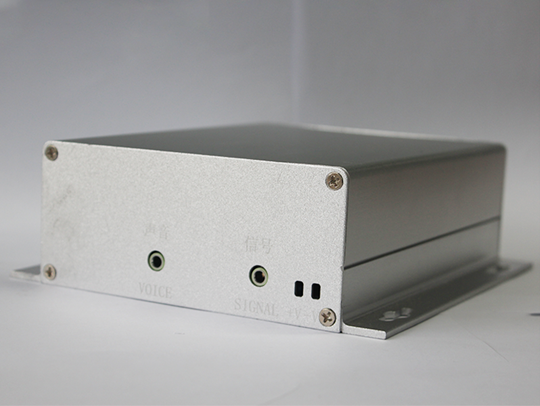Introduction of Acceleration Sensor and Amplifier
It is used in the measurement of bearing vibration accelerationAccelerometerIt is a piezoelectric sensor, and the vibration signal is transmitted by contacting the metal contact installed at the front end of the sensor with the outer ring of the bearing. The installation method and the use method are relatively convenient and simple.
The piezoelectric acceleration sensor, also known as the piezoelectric accelerometer, belongs to the inertial sensor. It uses the piezoelectric effect of certain substances such as quartz crystals. When the accelerometer is vibrated, the force of the mass block on the piezoelectric element also changes. .When the measured vibration frequency is much lower than the natural frequency of the accelerometer, the force change is proportional to the measured acceleration. Therefore, using this principle, the acceleration signal of the bearing vibration can be detected. The basic structure diagram of the acceleration sensor is as follows:

Acceleration sensor structure diagram
Since the output electrical signal of the piezoelectric sensor is a weak charge, and the sensor itself has a large internal resistance, the output energy is very small, and interference noise will be mixed in the acquisition process, and the signal-to-noise ratio is small, which brings a lot of pressure to the subsequent circuit. It must be difficult. For this reason, it is necessary to design an amplifier that meets the requirements of use.
The vibration signal amplifying circuit needs to have the advantages of high input impedance, low output impedance, low noise interference, strong signal amplification ability, low temperature drift, etc. The required amplification factor is usually large, while the amplification factor of a single-stage amplifier circuit is limited. It is most reasonable to use a two-stage amplifier circuit due to factors such as frequency and frequency. According to the national standard requirements for vibration measurement, the vibration signal requires a frequency range of 0.10KHz, so the amplifier also needs to have a wider output frequency band to meet subsequent signal processing (analog signal processing or digital signal processing). signal processing) requirements.


